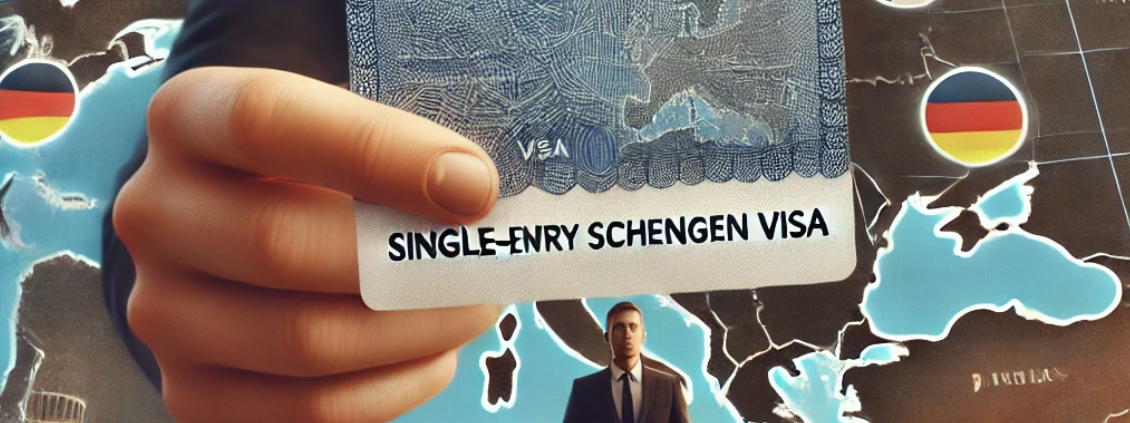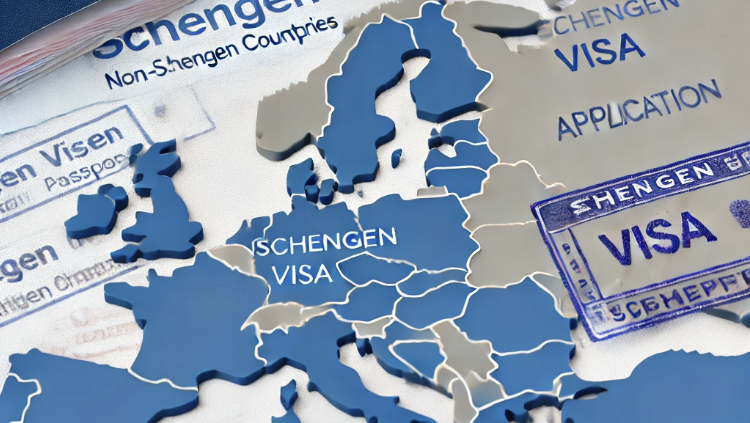Traveling across the Schengen Area offers incredible flexibility, but understanding the nuances of visa rules is crucial to avoid issues at border crossings. One of the most frequently asked questions by travelers is whether a single-entry Schengen visa allows them to visit multiple Schengen countries. In this article, we’ll clarify what a single-entry Schengen visa entails and how you can navigate between Schengen member states with it.
What Is a Single Entry Schengen Visa?
A single-entry Schengen visa permits you to enter the Schengen Area once for a specific duration, usually up to 90 days within a 180-day period. Once you exit the Schengen Zone, the visa becomes invalid, even if there is time left on it. This type of visa is most commonly issued for tourism, business, or family visits.
To learn more about the types of Schengen visas available, visit Schengen Visa Types.
Can You Travel Between Schengen Countries With a Single Entry Visa?
Yes, you can travel freely between all Schengen member countries with a single-entry Schengen visa, as long as you do not exit the Schengen Zone. The Schengen Area functions as a single territory without internal border checks, allowing for seamless movement between member states.
For instance, if you enter through France with a single-entry visa, you can continue your journey to Germany, Spain, or Italy without needing to present your passport at every border. This freedom of movement is one of the core benefits of the Schengen Agreement. For more details on the Schengen Area and its regulations, visit What Is the Schengen Area.
Important Considerations for Single Entry Schengen Visa Holders
While a single-entry visa allows you to travel between Schengen countries, there are a few key points to keep in mind:
1. Do Not Exit the Schengen Zone
The most important rule with a single-entry visa is that you cannot leave the Schengen Zone and then re-enter. For example, if you travel from Italy to Croatia (a non-Schengen country), your single-entry visa will no longer be valid upon attempting to return to the Schengen Area. In this case, you would need a multiple-entry visa to continue your travels within Schengen countries.
To avoid issues, plan your itinerary carefully and ensure all destinations are within the Schengen Area. For guidance on applying for a Schengen visa, refer to How to Apply for a Schengen Visa.
2. Stay Within the Allowed Duration
Single-entry Schengen visas typically allow you to stay for up to 90 days within a 180-day period. Be sure not to exceed this limit, as overstaying can lead to fines, deportation, or even a ban on future travel to Schengen countries.
3. Keep Track of Visa Validity and Expiration Date
Your visa’s validity period and the duration of stay are separate conditions. The validity period indicates the date range during which you can enter the Schengen Area, while the duration of stay refers to the number of days you are permitted to remain. Ensure your travel plans align with both of these restrictions.
For a comprehensive overview of Schengen visa policies, visit the official Schengen Area Information.
Example Itinerary: Using a Single Entry Schengen Visa
Here’s an example itinerary to illustrate how you can travel across multiple Schengen countries with a single-entry visa:
- Day 1-3: Arrive in Paris, France, and explore the city.
- Day 4-6: Take a train from Paris to Amsterdam, Netherlands.
- Day 7-10: Fly from Amsterdam to Rome, Italy, and enjoy the historic sites.
- Day 11-14: Travel by train from Rome to Munich, Germany.
- Day 15: Depart from Munich back to your home country.
In this example, the traveler remains within the Schengen Zone for the entire trip. Even though multiple countries are visited, there is no issue as long as the visa holder does not exit the Schengen Area.
Single Entry vs. Multiple Entry Schengen Visa: What’s the Difference?
A single-entry Schengen visa is designed for travelers who plan to stay within the Schengen Zone without leaving and returning. If you anticipate needing to exit and re-enter the Schengen Area during your trip (e.g., visiting non-Schengen countries like the UK or Croatia), you should apply for a multiple-entry visa instead.
- Single Entry Visa: Allows entry into the Schengen Area only once. Once you leave, the visa is no longer valid.
- Multiple Entry Visa: Permits multiple entries into the Schengen Area, allowing you to exit and re-enter as many times as needed within the visa’s validity period.
For information on the various visa types and their conditions, check out Schengen Visa Types.
Tips for Traveling With a Single Entry Schengen Visa
To make the most of your single-entry Schengen visa, consider the following travel tips:
- Plan an Efficient Route: Ensure your travel itinerary keeps you within Schengen countries. This will help you avoid invalidating your visa.
- Monitor Border Crossings: While there are no internal border checks, carry your passport at all times for identification purposes, especially when traveling by train or plane between Schengen countries.
- Keep Track of Your Stay Duration: Be mindful of the 90-day stay limit. If you plan to stay longer, apply for an extension or a different visa type before your current visa expires.
For more advice on preparing your Schengen visa application, visit How to Apply for a Schengen Visa.










